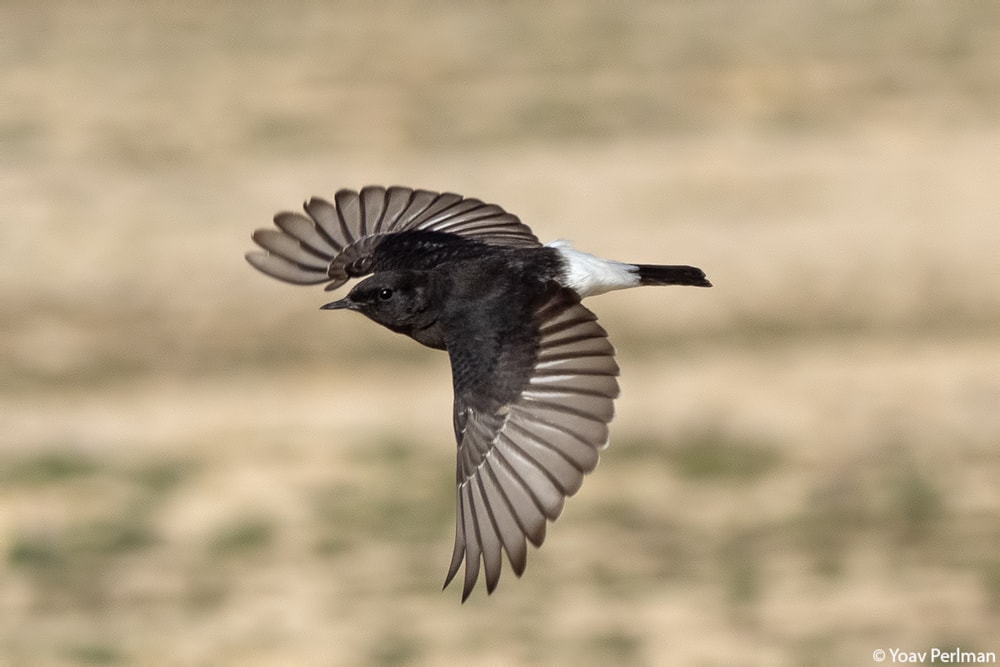IOC announces several Western Palearctic splits
The International Ornithological Congress (IOC) has announced a number of significant taxonomic decisions regarding Western Palearctic (WP) birds in recent weeks, which are set to increase the regional list by six species.
The first of these came on 28 April, when the committee revealed that it had accepted the split of Atlas Wheatear (traditionally referred to as 'Seebohm's Wheatear' by birders), a distinctive taxon of the Atlas Mountains in North Africa, from the more widespread and familiar Northern Wheatear.

The distinctive Atlas Wheatear, a common bird of its eponymous mountain range, has been elevated to species status by the IOC (Dave Barnes).
Then, in late May, the IOC posted an update on its website to say that it was set to recognise a three-way split of Green Bee-eater, with two of these – 'African Green Bee-eater' and 'Arabian Green Bee-eater' – both residents within the WP, the former being common along the Nile valley in Egypt and the latter found in Sinai, Israel and Jordan, as well as much of the Arabian peninsula.

Arabian Green Bee-eater, with its strikingly blue 'face', is most readily encountered in Israel and Jordan within the WP. Its former congener, now split as African Green Bee-eater, has a lime-green throat and supercilium, and is common in the Nile valley of Egypt (Kris Webb).
The committee has been particularly busy this week, with a further three decisions issued.
On Wednesday [16 June], the recognition of Graceful Prinia as two species was revealed, with Delicate Prinia Prinia lepida the chosen name for the newly elevated taxon.
The Delicate Prinia split is based on differences in morphometrics, plumage, vocalisations and mtDNA divergence, as laid out in a paper earlier this year. This means that there are now two prinias in the WP, with the north-eastern Delicate Prinia found from Turkey through India (encompassing Iraq, Iran and a handful of Gulf States including Bahrain, Kuwait and the United Arab Emirates). The south-western Graceful Prinia is found from Egypt through Oman, including Israel, Saudi Arabia and Lebanon.

Any birder who has seen a 'Graceful Prinia' while in the likes of Turkey or Kuwait can now add the newly recognised Delicate Prinia to their WP lists (Brian Harrison).
Two further decisions came on Friday 18 June, including the long-awaited recognition that Dunn's Lark comprises two species. The African form, Eremalauda dunni, will retain the English name of Dunn's Lark, while Eremalauda eremodites will be named Arabian Lark. The former is found across Saharan North Africa and is most readily seen in the WP in Mauritania and Western Sahara, although sometimes strays further north into Morocco. The latter, meanwhile, is a tricky species to see in the WP: it periodically appears (and sometimes breeds) in Israel and Jordan, although has not been seen in Kuwait for some years (despite previously being a reliable breeder there).
The other ruling confirms the three-way split of Mourning Wheatear, with the distinctive warriae ('Basalt Wheatear'), breeding in Syria and wintering sporadically in Israel and Jordan, as well as the sexually dimorphic halophila ('Maghreb Wheatear'), found in north-west Africa and generally seen by birders in Morocco, both elevated to full species status. The latter especially has surprised some taxonomists, who question the validity of such recognition given some mtDNA evidence.
All of these changes will be officially recognised when the IOC publishes v 11.2 of its World Bird List in July.

Basalt Wheatear has been the subject of a long and varied taxonomic debate, but is now given full species status (Yoav Perlman).

